

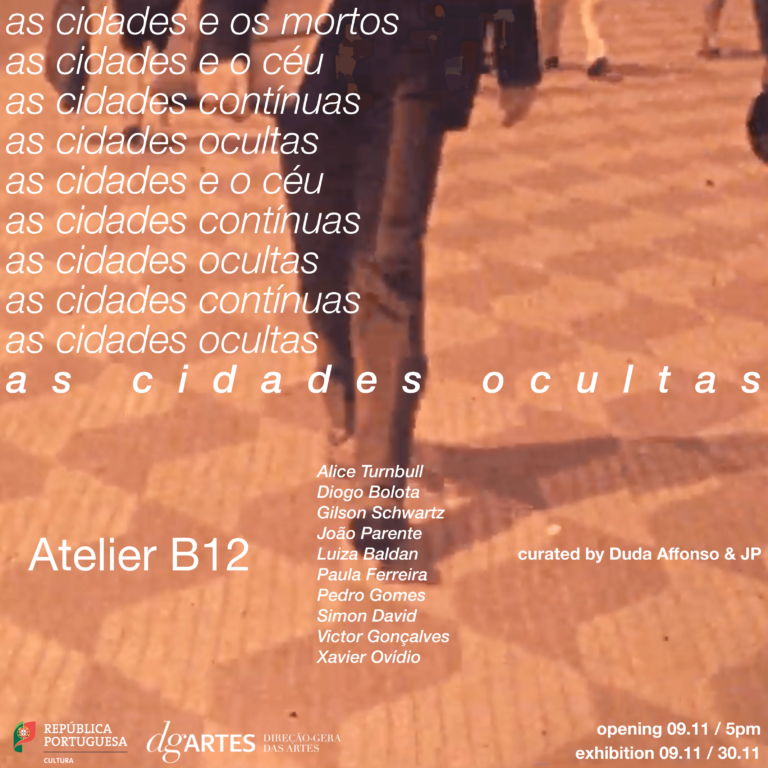
Com o grupo de artistas composto por Alice Turnbull, Diogo Bolota, Gilson Schwartz, João Parente, Luiza Baldan, Paula Ferreira, Pedro Gomes, Simon David, Victor Gonçalves e Xavier Ovídio trazendo como tema principal a cidade e suas órbitas. A curadoria está a cargo de Duda Affonso e JP.
Pensar as metrópoles – Lisboa, Porto, Paris, São Paulo, Tokyo – e seu estado de franca decadência e ruína frente à lógica de um pensamento tanto virtual quanto descentralizado. As cidades invisíveis, ocultas por baixo do asfalto e acima das nuvens onde passam informações da televisão e dados celulares e que vão tomando forma enquanto cidade propriamente dita. De uma maneira ou de outra, “a cidade é redundante: repete-se para fixar alguma imagem na mente […] a memória é redundante: repete os símbolos para que a cidade comece a existir.” (Calvino, p. 17) Uma cidade de possibilidades: sentia que a memória que trouxe pra cidade e pras pessoas que estavam fazendo o rolê acontecer naquele momento, inventou uma cidade nova. Os mais jovens não podem achar que são os donos da cena – a cidade tem uma história ao mesmo tempo que as cidades contam suas próprias histórias. Quem é que fazia a cena das antigas? Nota: quem são essas pessoas? “Assim – dizem alguns – confirma-se a hipótese de que cada pessoa tem em mente uma cidade exclusivamente feita de diferenças, uma cidade sem figuras e sem forma, preenchida pelas cidades particulares.” (Calvino, p. 25) A pós-modernidade nos convoca a um eterno presente, uma espécie de obsolescência programada daquilo que já não é o agora. As metrópoles são as passarelas para as coisas da moda: os tênis, os óculos, as bolsas, os jeans e etc. Entretanto, que coisa é aquela tão básica quanto a camisola branca por baixo da camisa de botão da pasteleira? O que resiste no tempo das cidades – o que sobrevive à velocidade furiosa dos carros nas autopistas? A memória fica registrada no canto empoeirado da escada do metrô e fica também no rastro rasgado da bandeira velha hasteada em frente a um hotel barato. A senhora acorda cedo para passar o café e fica olhando a vida pela janela da sala enquanto seu gato Nuno roça-se por entre seus pés e passa a pontinha do rabo por suas coxas. Fugir: estar na cidade é querer constantemente não estar nela. Pegar um voo para qualquer lugar a preços promocionais e ficar dias a dormir em um sofá da ikea semi-confortável apenas para estar em outro lugar às voltas com outros problemas. Voltar e receber como boas-vindas a cagada de um pombo daqueles que desde antes da viagem, e talvez antes mesmo da minha vinda para esta morada, fica ali pousado no portal da entrada. Escolheu logo hoje, quando senti que seria finalmente feliz na cidade. Pequenas e grandes fugas, há dias em que o simples ato de pegar o skate e deslizar pelas ruas é suficiente, uma forma de navegar entre os arranha-céus, de cortar o vento e sentir a cidade sob as rodas. A liberdade mora nesses pequenos gestos, nas escolhas de trajetos que não necessariamente levam a um lugar novo, mas reconfiguram o velho, o conhecido, gasto pela rotina e pelo tempo. A cidade, nesse ir e vir, é sempre outra, nova ainda que velha. Aquele poste caído na esquina, a placa enferrujada, o banco da praça onde já não se pode sentar, o buraco no asfalto, o bueiro fétido, a merda do cachorro ao cruzar a esquina. Esses vestígios de outras eras se entrelaçam com a pressa do presente, criando uma paisagem onde o passado e o futuro colidem a cada instante. Percorrer a cidade é como assistir a um filme, as imagens passam em velocidade pelos olhos enquanto se coleta instantâneos mais ou menos nítidos, mais ou menos ruidosos. Lembrar das cidades é como lembrar de um sonho já que “as cidades, como os sonhos, são construídas por desejos e medos, ainda que o fio condutor de seu discurso seja secreto, que as suas regras sejam absurdas, as suas perspectivas enganosas, e que todas as coisas escondam uma outra coisa.” (Calvino, p. 29)
A cidade nos engole e nos empurra. Os trajetos se repetem, os passos ecoam nas calçadas gastas, e o caminho que parece sempre o mesmo se reinventa no detalhe invisível. Cada ida para o trabalho, para a universidade, o bar de esquina ou a casa das amizades fazem uma dança involuntária entre ruas e avenidas, com o asfalto quente, o tilintar das moedas no bolso e o som abafado de vidas passando apressadas. Entramos em carros de aplicativos, táxis, ônibus, a boleia na mota da colega de trabalho – como se fosse um ritual moderno, onde o destino, por mais rotineiro que seja, carrega consigo um ar de mistério. O metrô nos conduz por corredores de concreto e aço, onde o barulho do trem se funde ao canto estridente de uma cidade que não dorme, onde os sons, por vezes, imitam o canto dos pássaros que se perderam entre os prédios – por outras, se confundem com o apito desesperado das trotinetes afogadas na fonte luminosa. A cidade, apesar de bela, é injusta, afasta dos centros urbanos a vida dos habitantes que a constroem cotidianamente dando lugar ao transeunte que, despreocupadamente, usa e abusa de seus espaços. A cidade inclui, a cidade exclui, a cidade beneficia, a cidade abusa, a cidade cansa e a cidade acolhe – quem tem direito às cidades? Para que servem as cidades daqui em diante?
The group of artists includes Alice Turnbull, Diogo Bolota, Gilson Schwartz, João Parente, Luiza Baldan, Paula Ferreira, Pedro Gomes, Simon David, Victor Gonçalves and Xavier Ovídio, whose main theme is the city and its orbits. Duda Affonso and JP are the curators.
Thinking about metropolises – Lisbon, Porto, Paris, São Paulo, Tokyo – and their state of frank decay and ruin in the face of the logic of both virtual and decentralised thinking. The invisible cities, hidden beneath the tarmac and above the clouds where television information and mobile data pass through and which are taking shape as a city in their own right. In one way or another, ‘the city is redundant: it repeats itself in order to fix some image in the mind […] memory is redundant: it repeats the symbols so that the city begins to exist.’ (Calvino, p. 17) (Calvino, p. 17) A city of possibilities: I felt that the memory I brought to the city and to the people who were making the tour happen at that moment, invented a new city. Younger people can’t think they’re the masters of the scene – the city has a history at the same time as cities tell their own stories. Who made the old scene? Note: who are these people? ‘Thus – some say – the hypothesis is confirmed that each person has in mind a city exclusively made up of differences, a city without figures and without form, filled with particular cities.’ (Calvino, p. 25). Postmodernity summons us to an eternal present, a kind of programmed obsolescence of what is no longer now. The metropolises are the catwalks for fashionable things: trainers, glasses, bags, jeans and so on. However, what is as basic as the white t-shirt under the pastry chef’s button-down shirt? What endures in city time – what survives the furious speed of cars on motorways? The memory is recorded in the dusty corner of the underground stairs and also in the torn trail of the old flag flying in front of a cheap hotel. The lady wakes up early to make coffee and stares at life through the living room window while her cat Nuno rubs up against her feet and runs the tip of his tail along her thighs. Escape: to be in the city is to constantly want not to be there. To take a flight to anywhere at discounted prices and spend days sleeping on a semi-comfortable ikea sofa only to find yourself somewhere else dealing with other problems. To come back and be welcomed by a pigeon turd, one of those pigeons that has been sitting in the doorway since before I travelled, and perhaps even before I came here. It choses today, when I felt I would finally be happy in the city. There are days when the simple act of picking up a skateboard and gliding through the streets is enough, a way of navigating between the skyscrapers, of cutting through the wind and feeling the city under your wheels. Freedom lives in these small gestures, in the choices of routes that don’t necessarily lead to a new place, but reconfigure the old, the familiar, worn out by routine and time. The city, in this coming and going, is always different, new even though it’s old. That fallen lamppost on the corner, the rusty sign, the bench in the square where you can no longer sit, the hole in the tarmac, the fetid manhole, the dog shit as you cross the corner. These vestiges of other eras intertwine with the rush of the present, creating a landscape where past and future collide at every moment. Walking through the city is like watching a film, the images speed past your eyes while you collect snapshots that are more or less clear, more or less noisy. Remembering cities is like remembering a dream, since ‘cities, like dreams, are built by desires and fears, even if the thread of their discourse is secret, their rules absurd, their perspectives deceptive, and all things conceal something else.’ (Calvino, p. 29).
The city swallows us up and pushes us along. The routes are repeated, the footsteps echo on the worn pavements, and the path that always seems the same is reinvented in invisible detail. Every trip to work, university, the corner bar or friends’ houses is an involuntary dance between streets and avenues, with hot asphalt, the clink of coins in pockets and the muffled sound of lives rushing by. We get into app cars, taxis, buses, a ride on a work colleague’s motorbike – as if it were a modern ritual, where the destination, however routine, carries with it an air of mystery. The metro takes us through corridors of concrete and steel, where the noise of the train merges with the shrill singing of a city that never sleeps, where the sounds sometimes imitate the singing of birds that have lost their way among the buildings – at other times they are confused with the desperate whistle of the scooters drowning in the light source. The city, although beautiful, is unjust, it removes from urban centres the lives of the inhabitants who build it every day, giving way to the passer-by who carelessly uses and abuses its spaces. The city includes, the city excludes, the city benefits, the city abuses, the city tires and the city welcomes – who has the right to cities? What are cities for from now on?
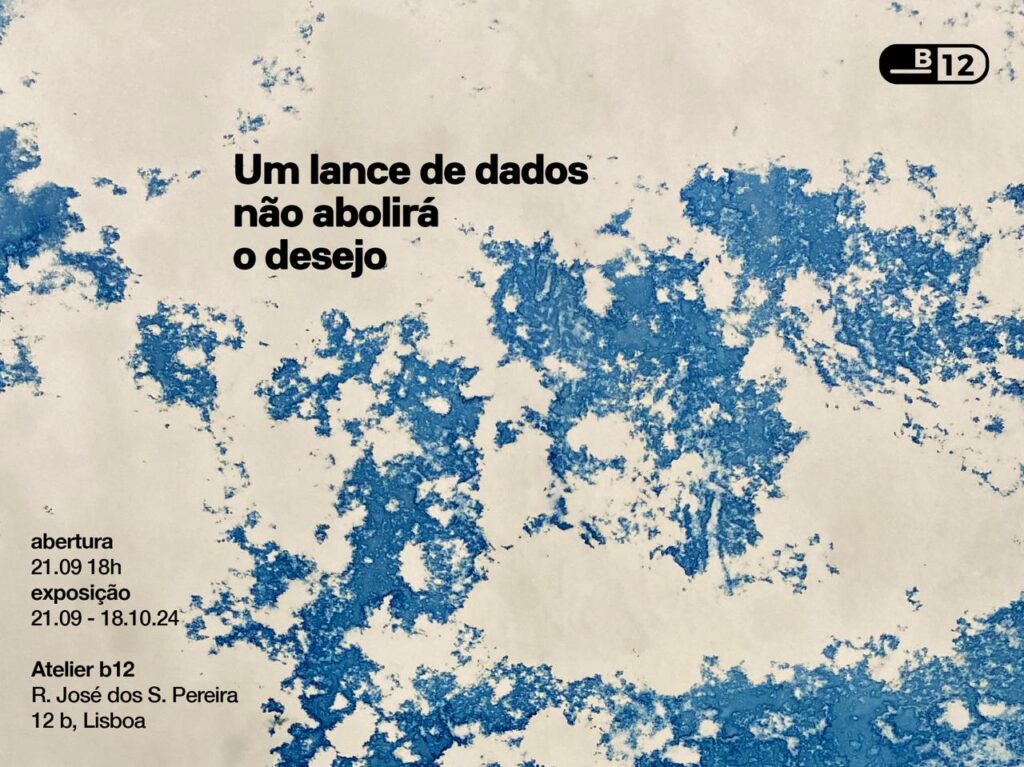

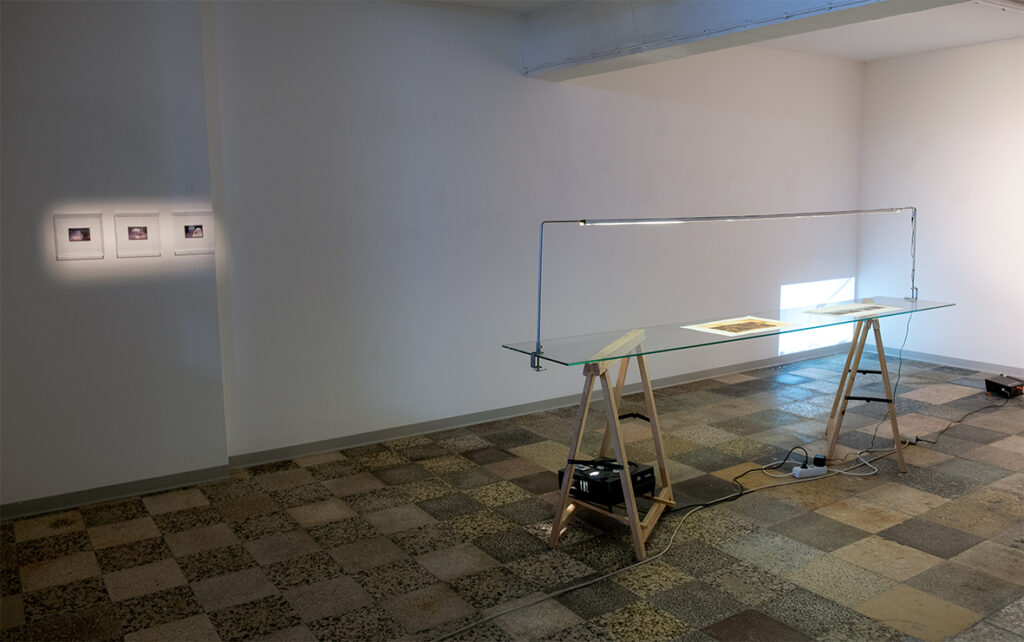
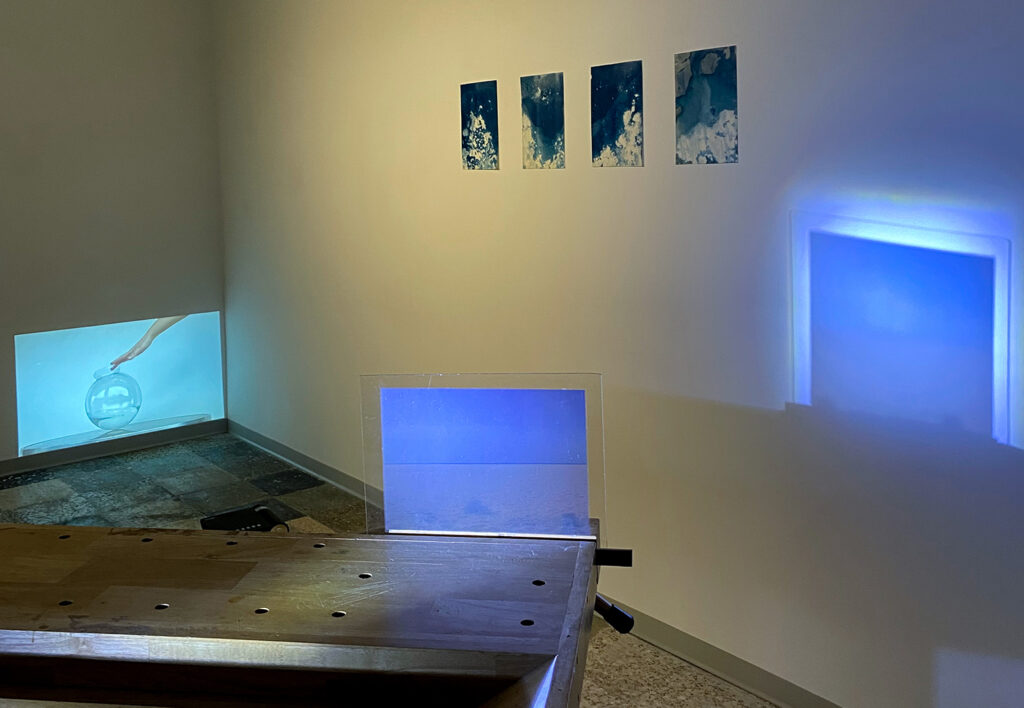
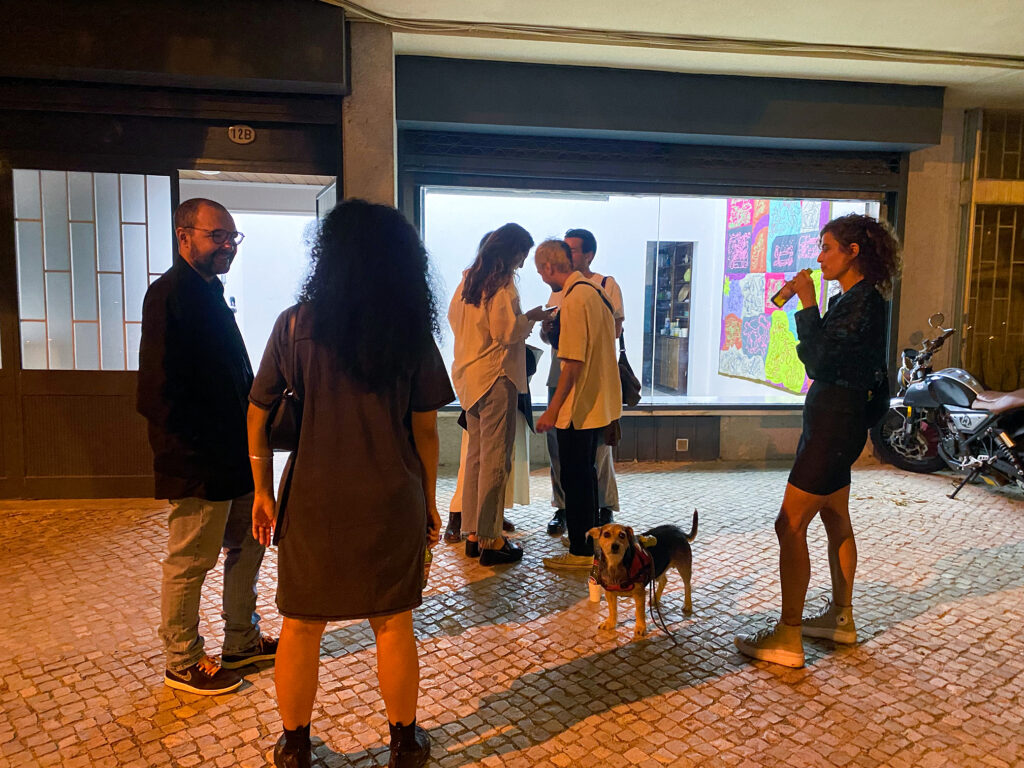


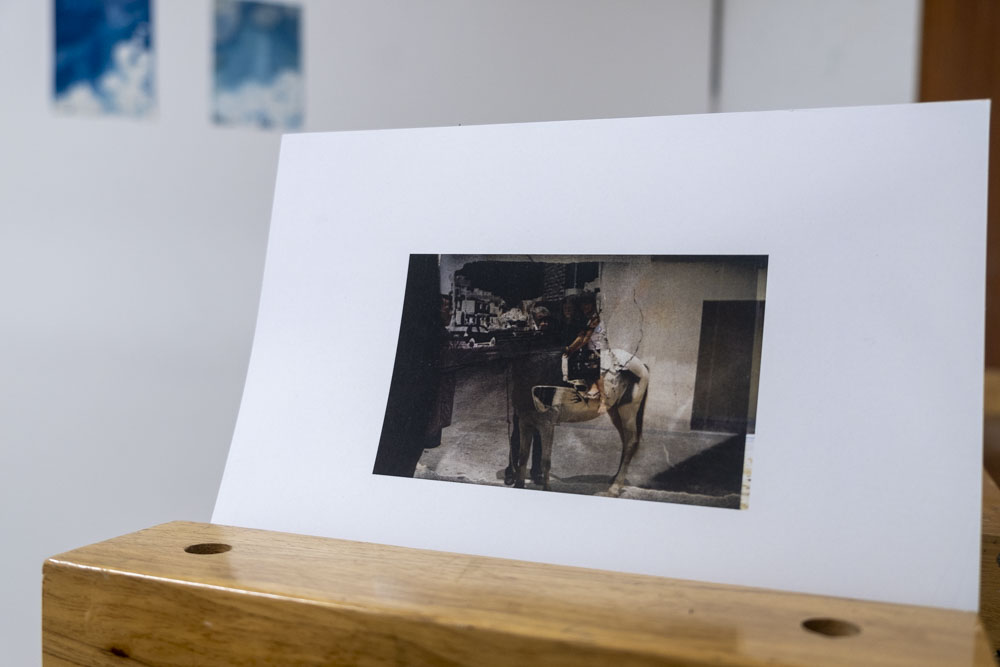
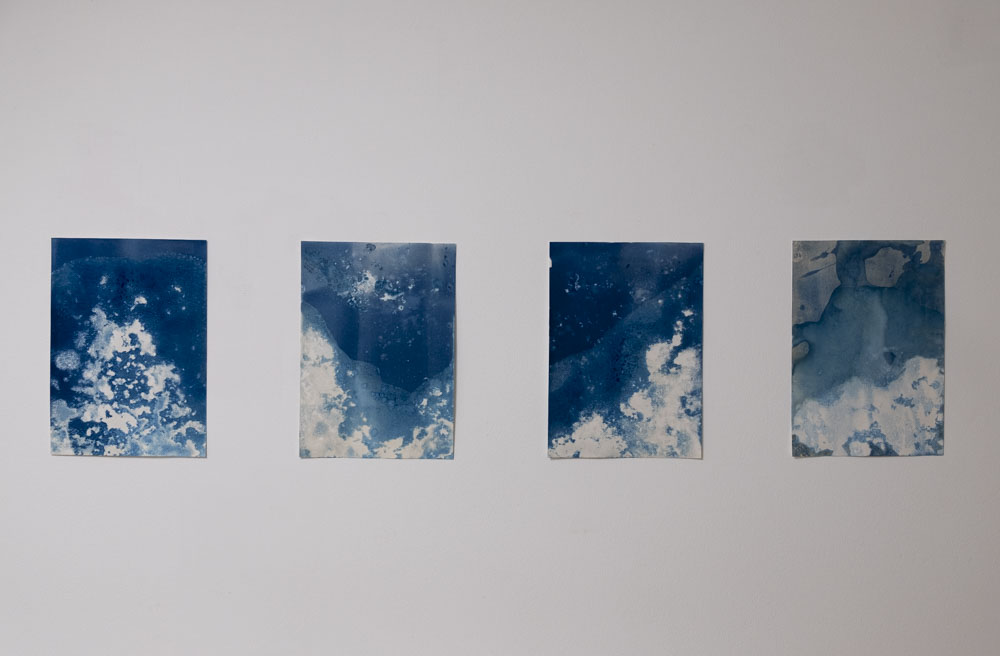
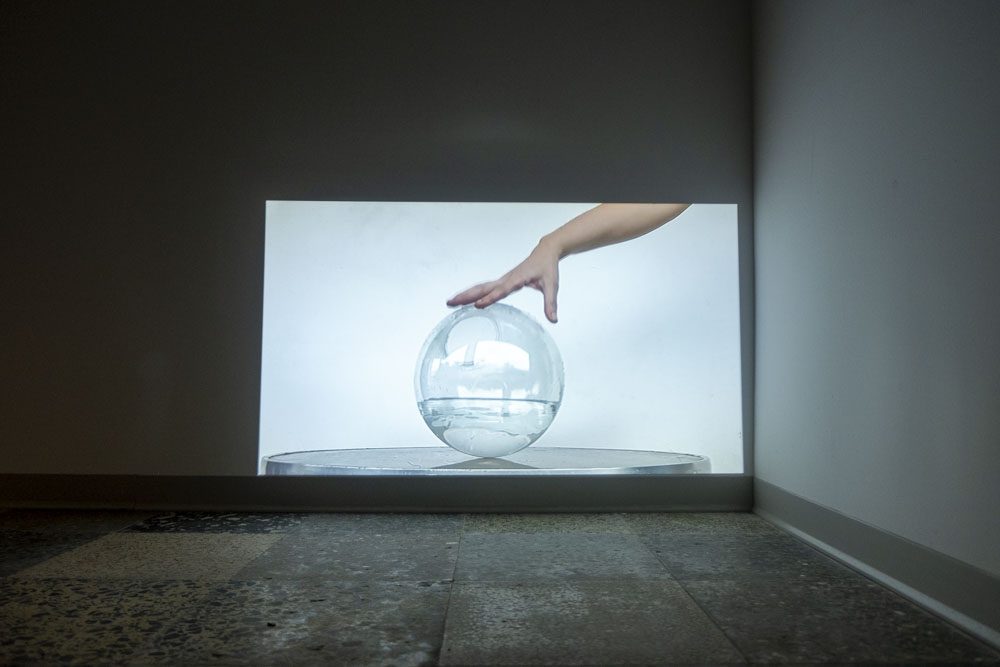
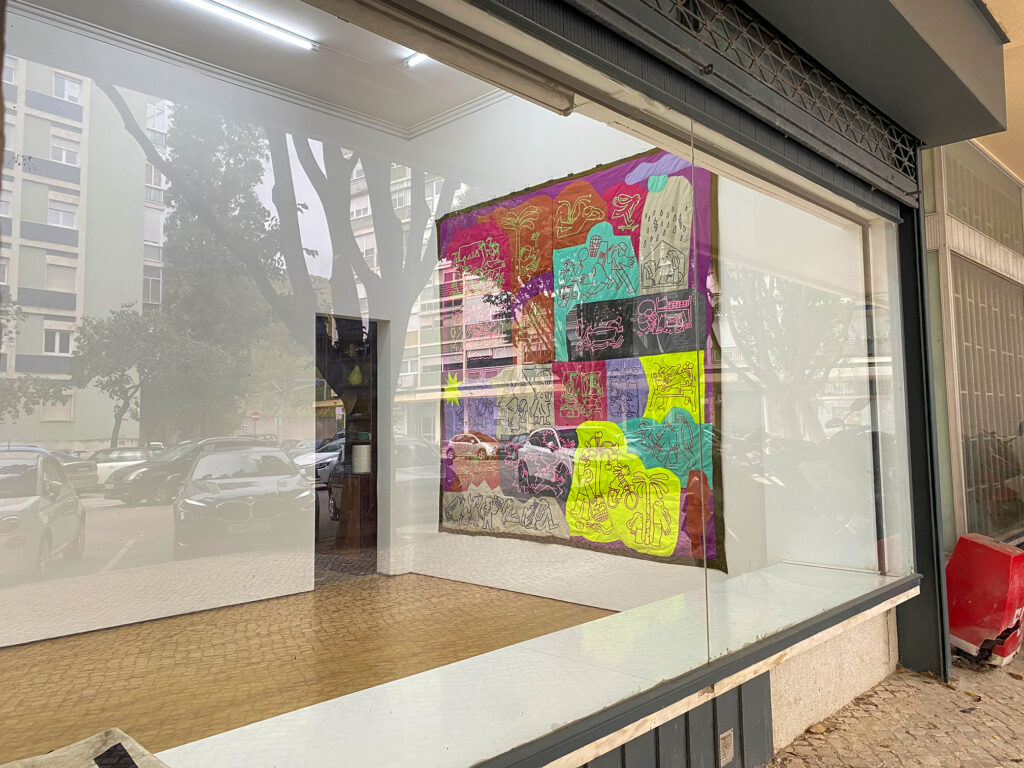
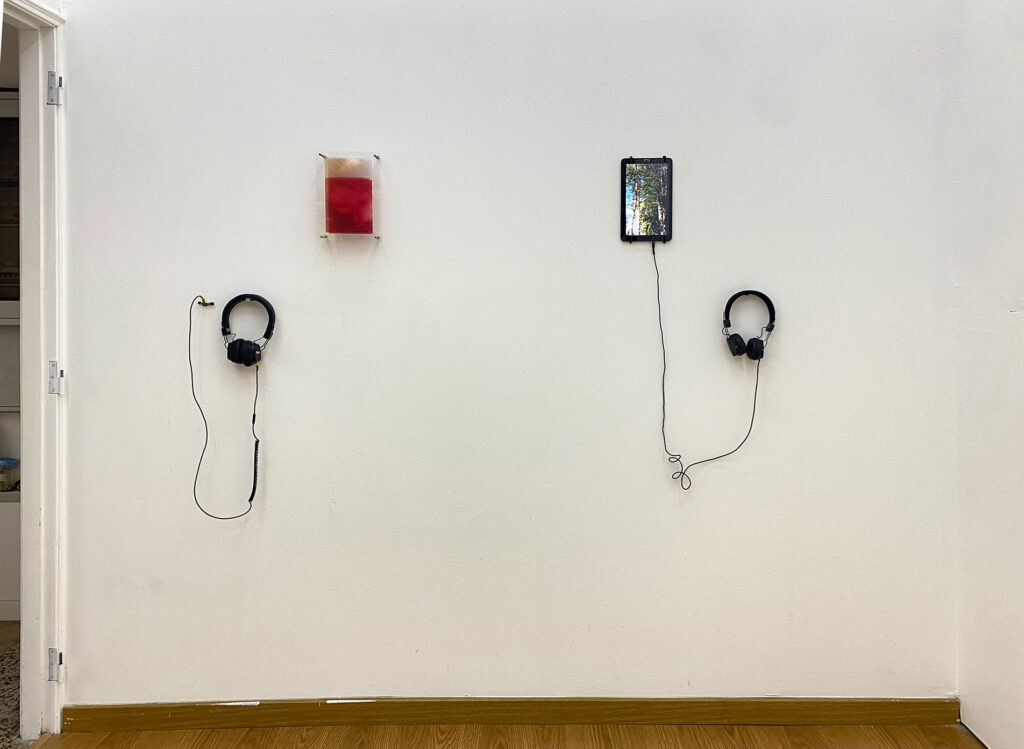



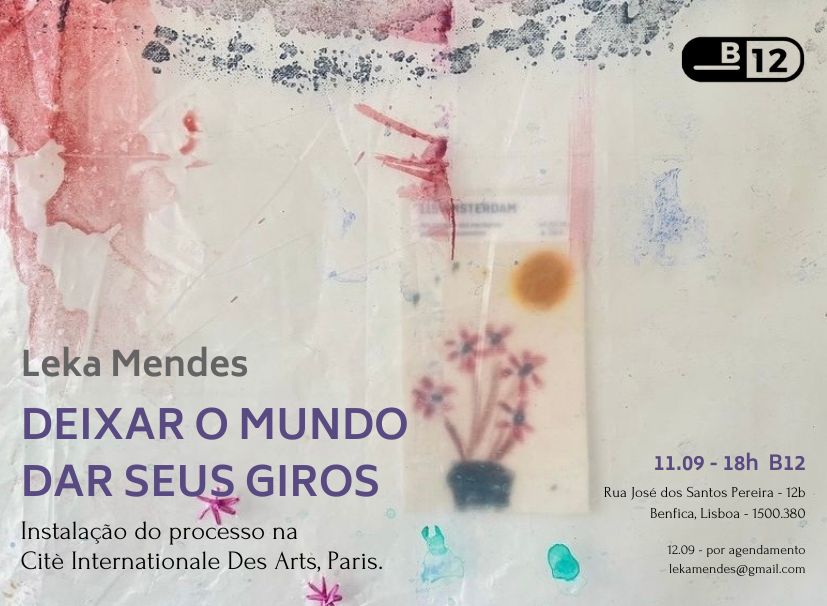


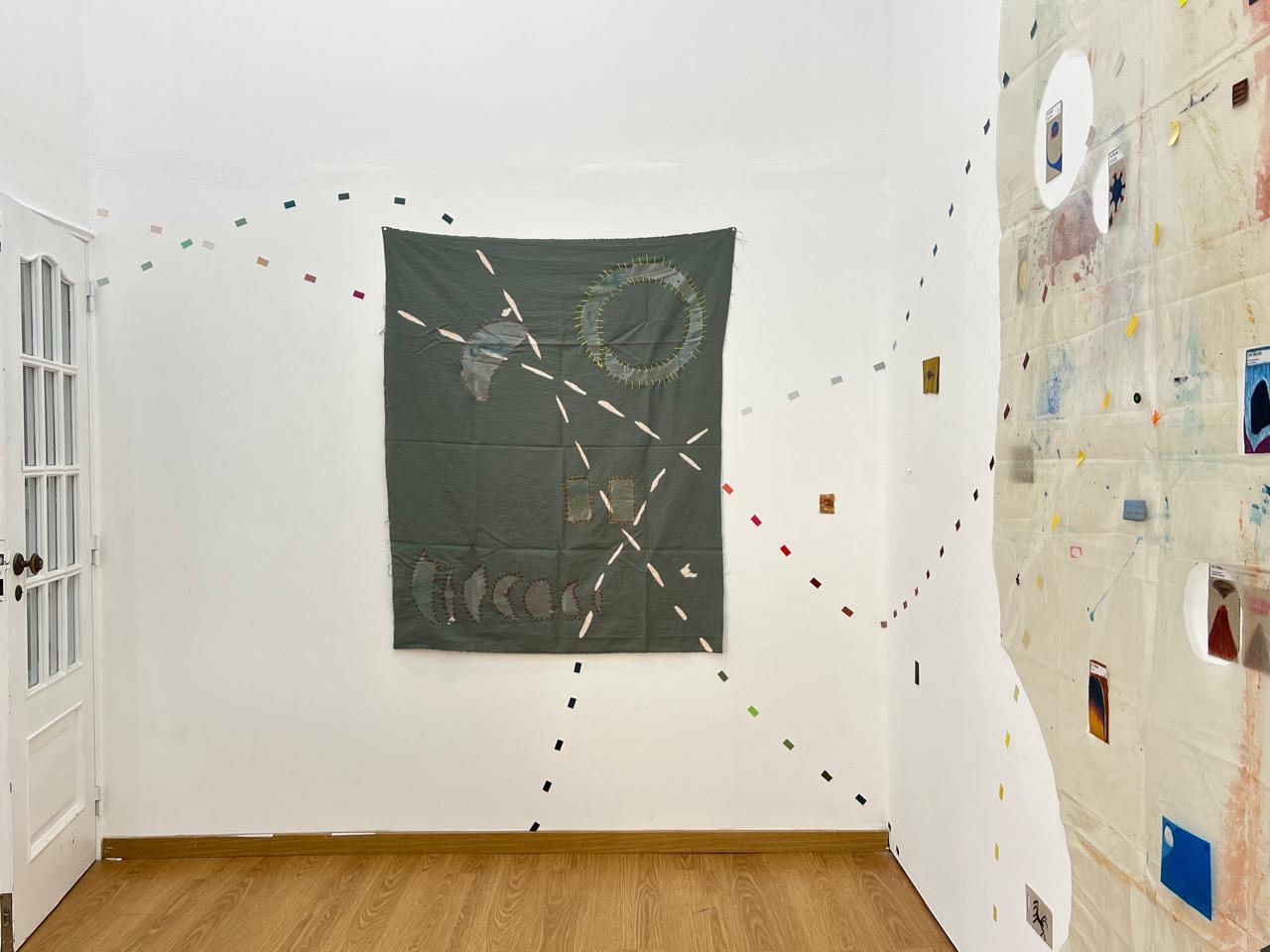

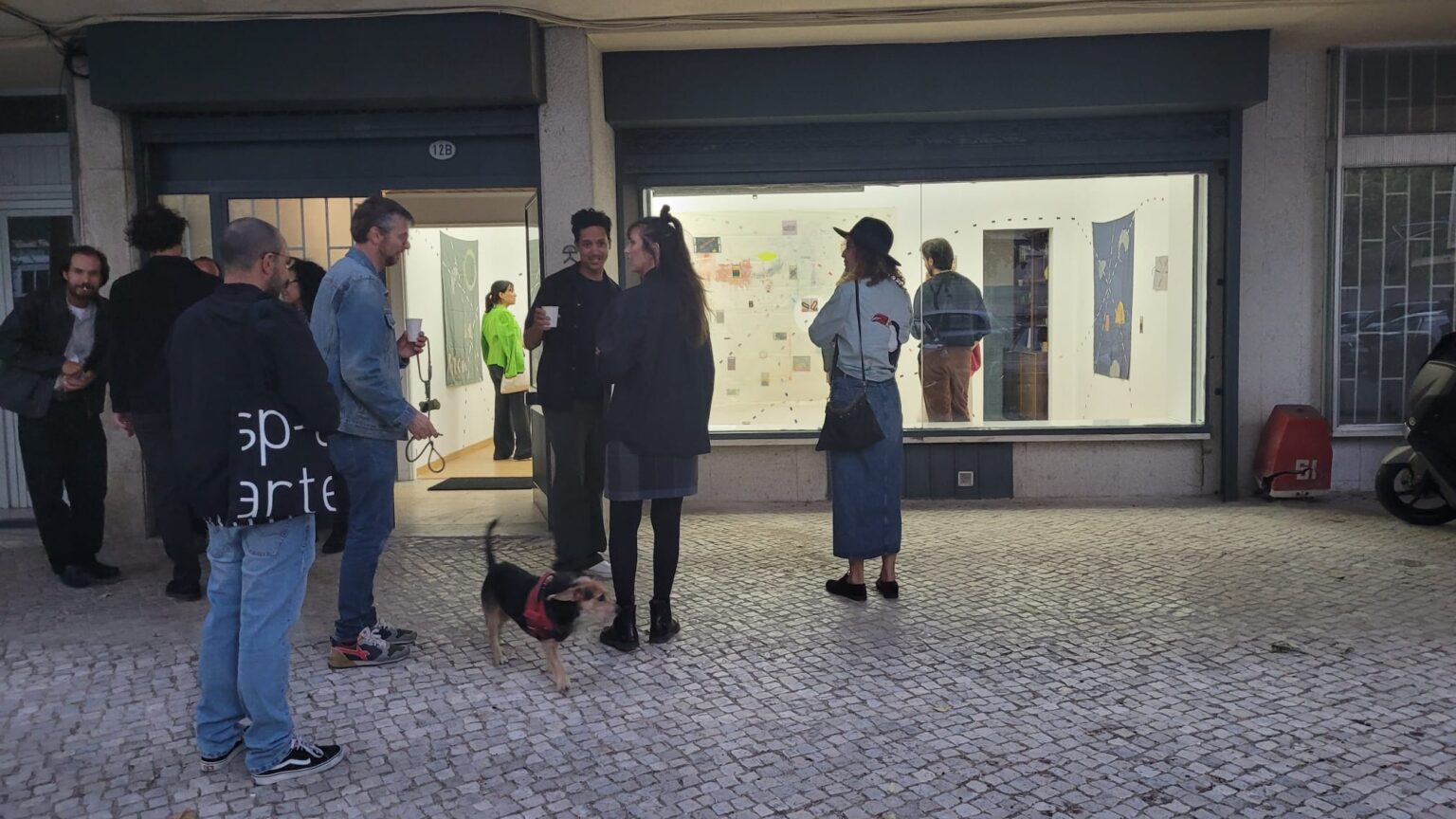
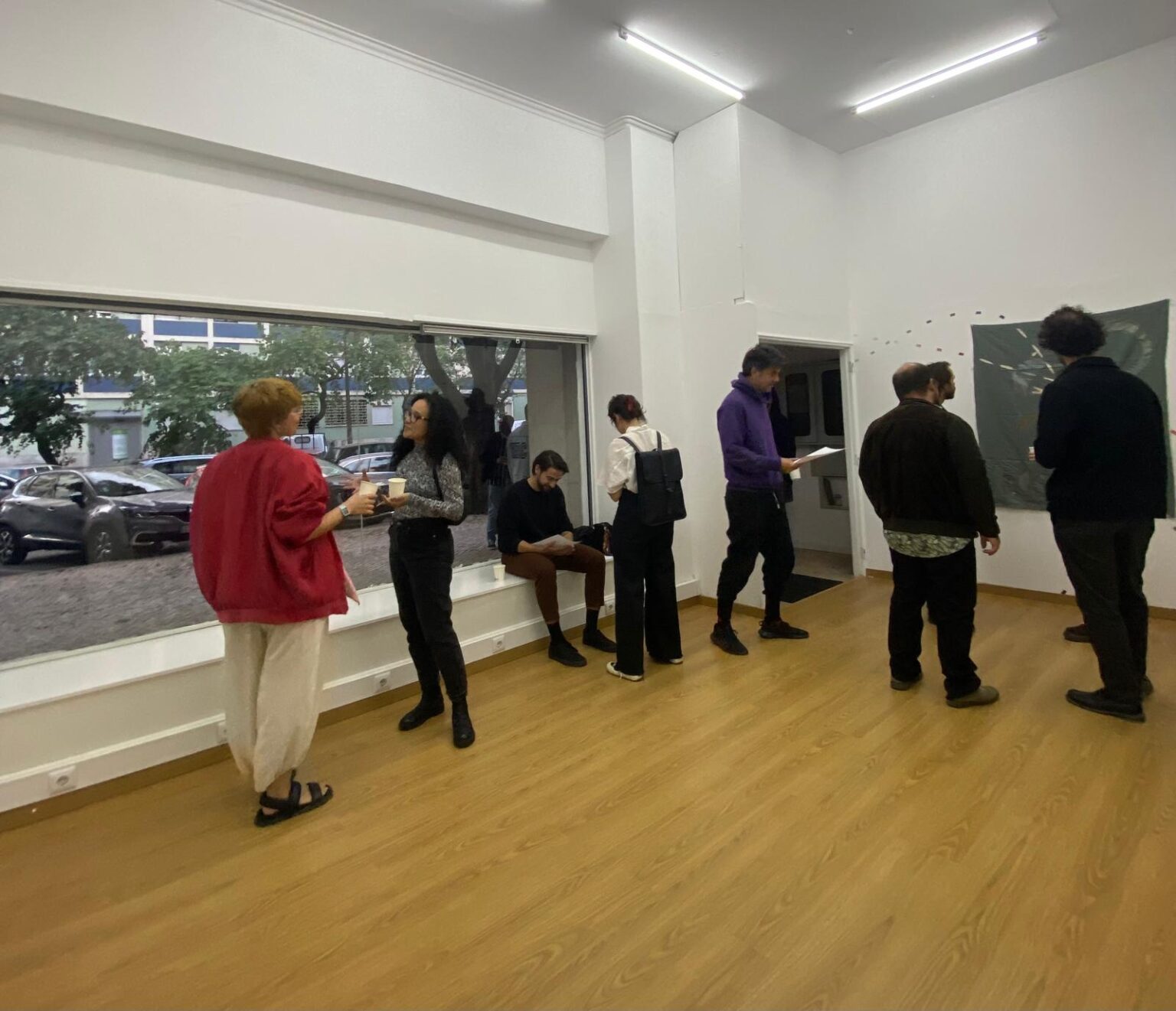

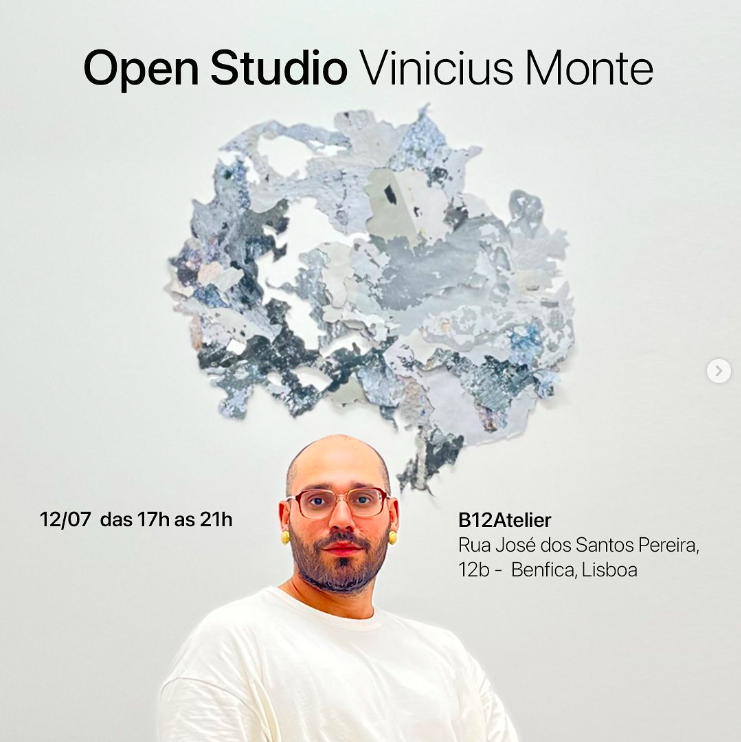



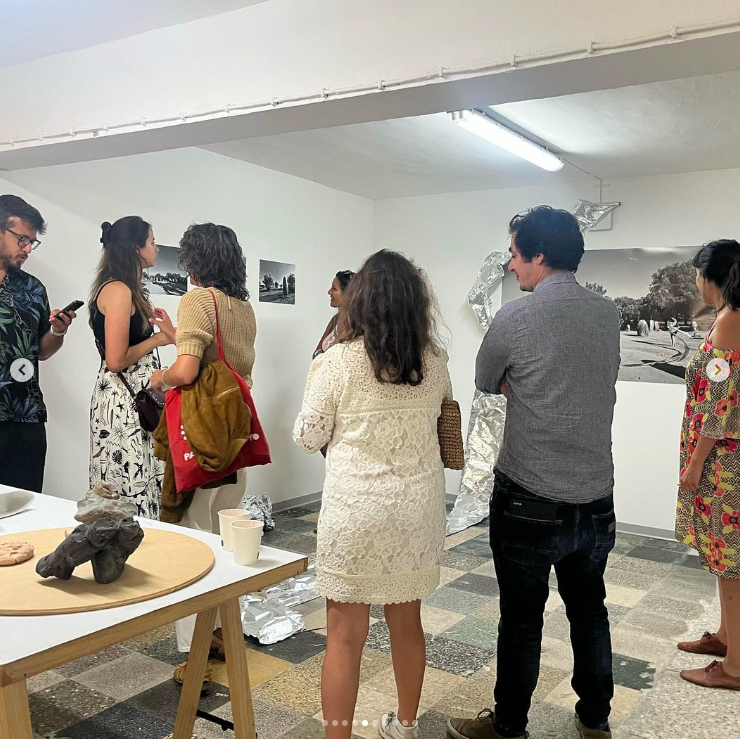



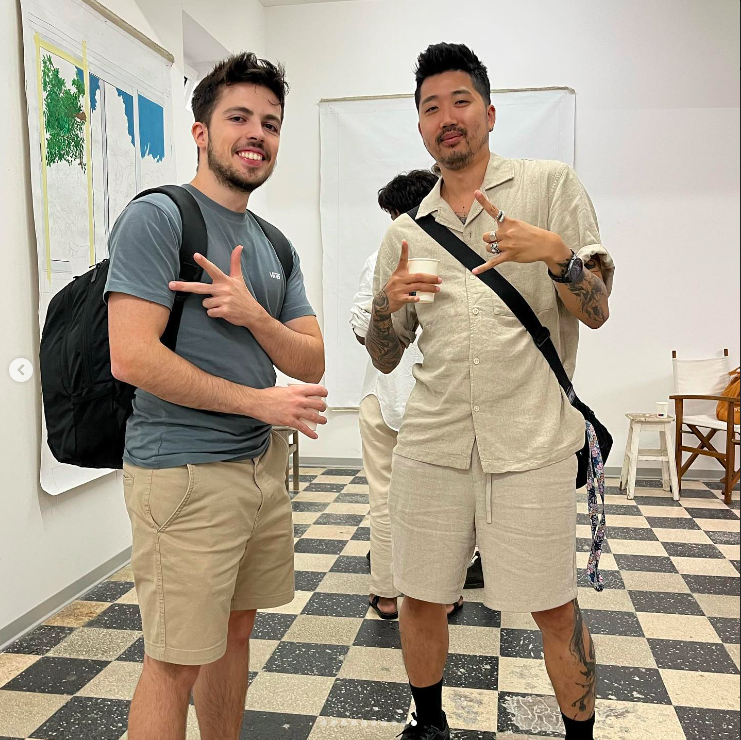
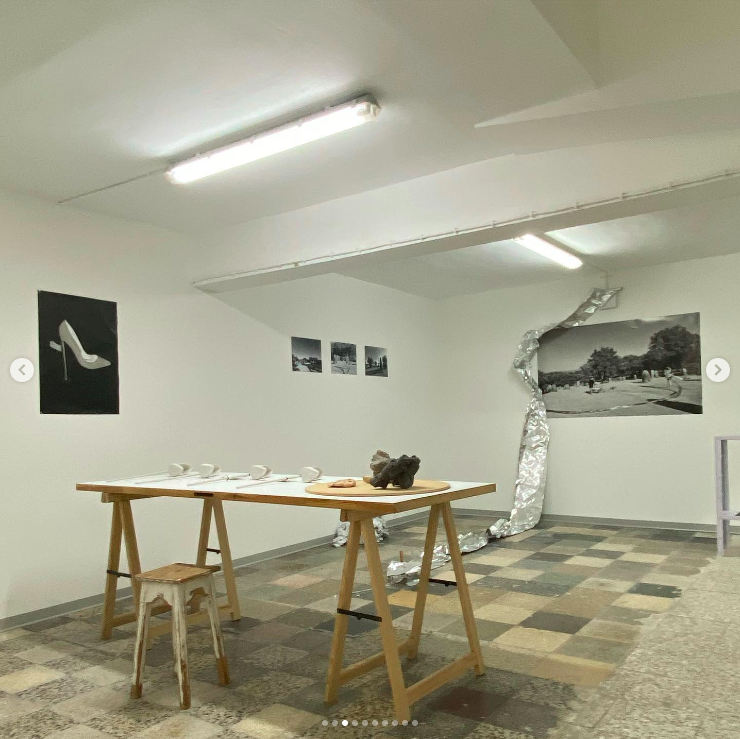
is proudly powered by WordPress